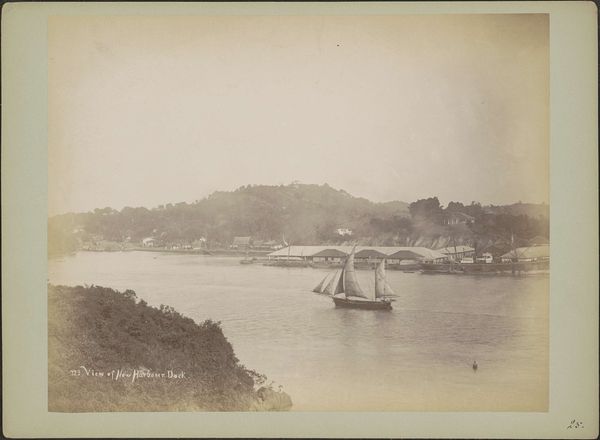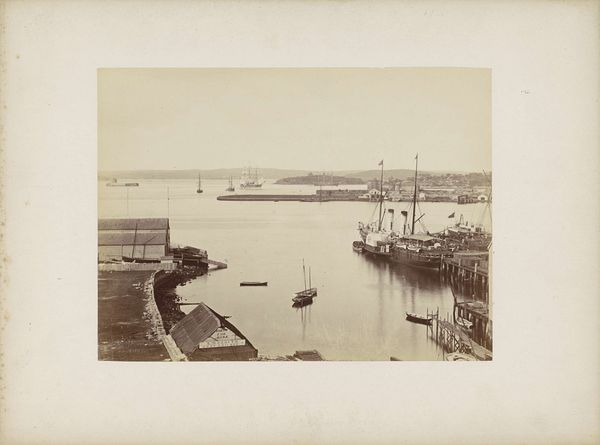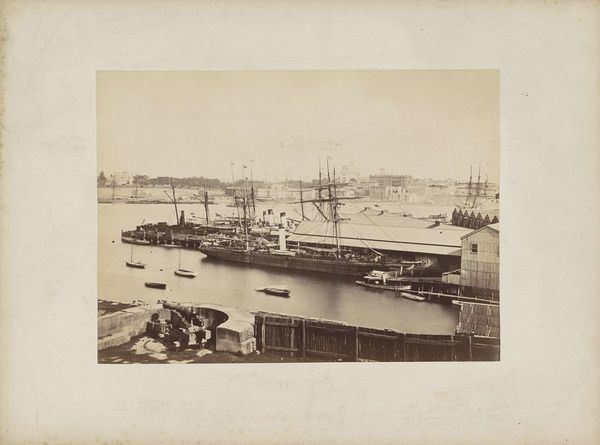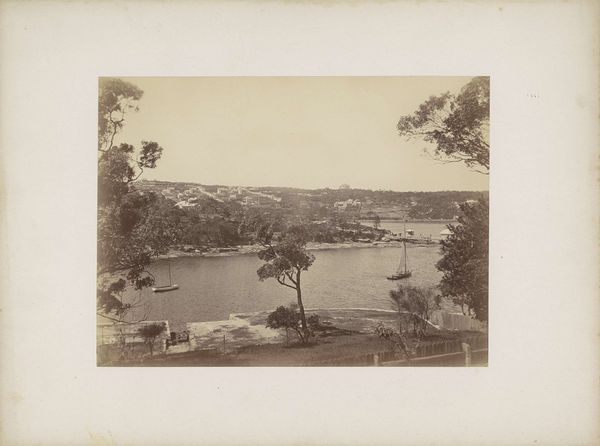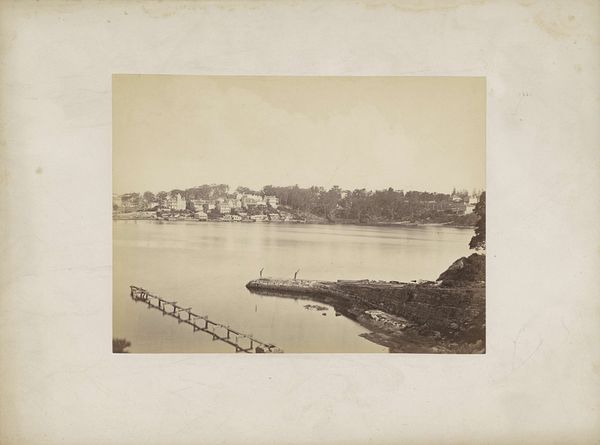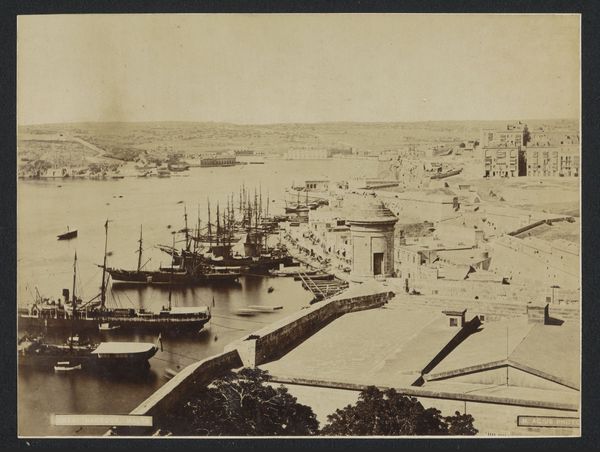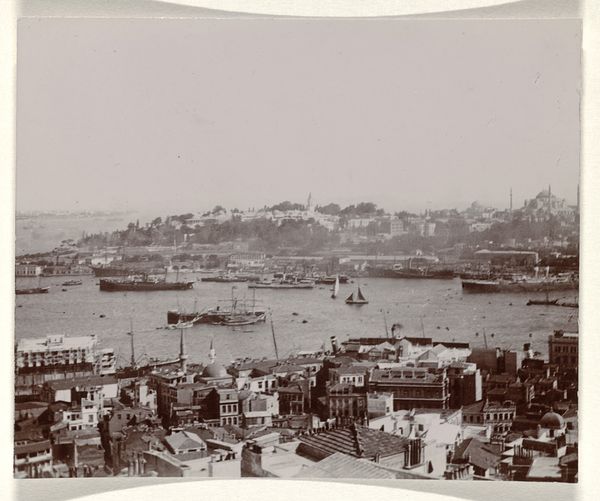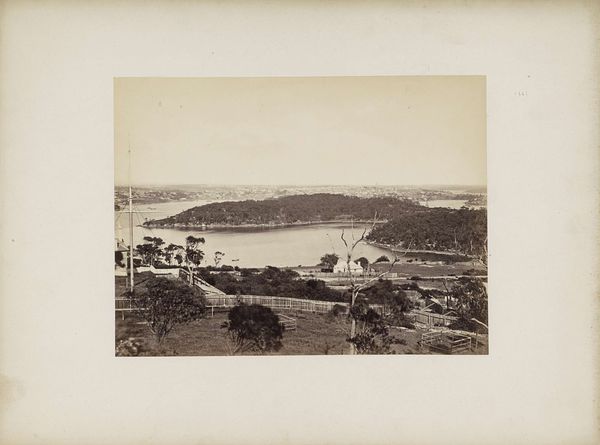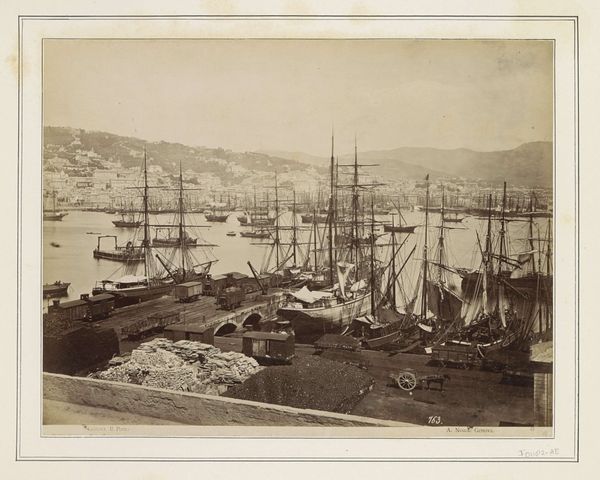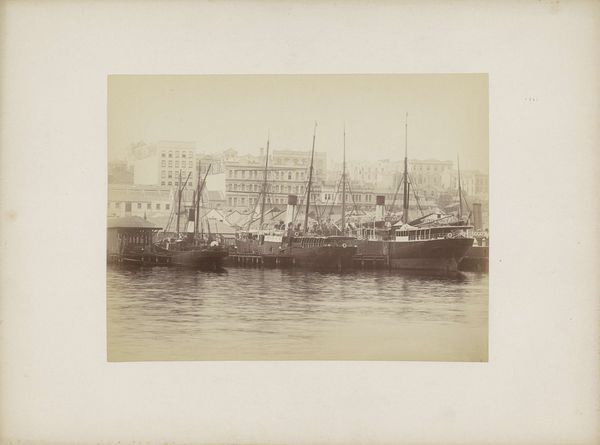
Gezicht op de haven en gebouwen van (vermoedelijk) Sydney c. 1890 - 1910
0:00
0:00
photography
#
ship
#
pictorialism
#
landscape
#
photography
#
cityscape
Dimensions: height 241 mm, width 324 mm
Copyright: Rijks Museum: Open Domain
Curator: This is “Gezicht op de haven en gebouwen van (vermoedelijk) Sydney,” a photograph by Charles Bayliss, likely taken between 1890 and 1910. It's currently held here at the Rijksmuseum. Editor: It’s a quiet, contemplative image. The tonal range is soft, almost hazy, which contributes to the overall serenity of the harbor scene. You have sailboats sitting still, their reflections barely visible. It makes me wonder, what stories are held in the negative space of colonialism? Curator: Bayliss was a significant figure in Australian photography. What I find striking is his manipulation of light and composition, hallmarks of Pictorialism, which often served as an aesthetic distancing from hard social realities of colonial port life. This artistic choice raises questions: whose story is amplified, and whose remains unheard? Editor: Exactly! Pictorialism aimed for art, for beauty, yet that aesthetic choice inevitably masks some truths while elevating others. Think about the context: Sydney was a burgeoning colonial city built on stolen land. Whose perspective informs this seemingly benign harbour scene? What perspectives and peoples have been erased in this 'picturesque' composition? Curator: Indeed. Bayliss had worked extensively for the government, documenting infrastructure and urban development, inevitably reflecting that perspective. His lens contributes to a particular narrative of progress and prosperity, even amidst dispossession and ongoing Indigenous resistance. How do the ships act not only as objects but colonial symbols? Editor: And even the selection of what to frame within the camera acts as a form of power in what should be recorded and recognized by the dominant colonial gaze. The "empty" space feels laden with unseen histories. How do we critically engage with these images to acknowledge the complexities, not just accept a singular, visually pleasing narrative? Curator: Absolutely. By questioning the photograph's creation and its reception within the sociopolitical climate of the time, we gain a richer understanding of not only the image itself, but also the complex forces at play. Editor: It reminds me to think beyond the surface—to delve into the hidden stories and the power dynamics that shaped our perception of the world, then and now.
Comments
No comments
Be the first to comment and join the conversation on the ultimate creative platform.
